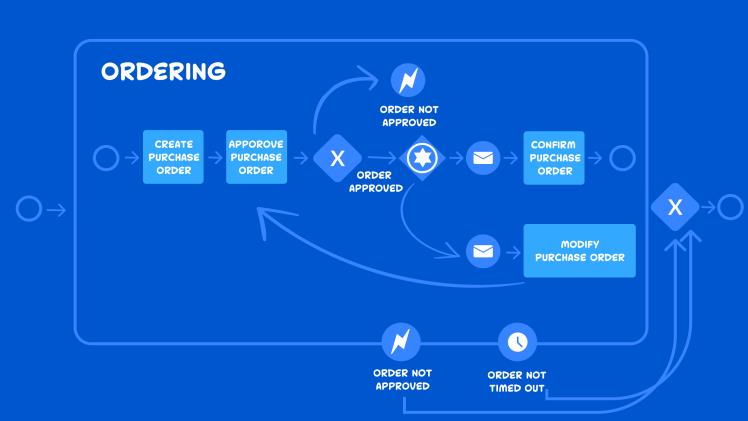BPMN (Business Process Modeling Notation) is a standardized way of graphically mapping business processes. It facilitates communication among different stakeholders regarding workflows and makes process analysis and improvement much simpler.
BPMN Events
BPMN events are a collection of symbols that represent various stages of a process. They may include the start of an activity, receipt of a message or alteration in document state.
Event triggers may include messages, signals, timers and exception conditions. Each type is visually distinguished by an icon within the bpmn elements.
Intermittent or boundary events are connected to activity boundaries and can be configured to interrupt normal operations. When this occurs, control flow out of an activity follows an exception path associated with the boundary event.
What is BPMN?
BPMN (Business Process Management Notation) is a standardized graphic notation designed to facilitate the flow of business activities. It was initially created by the Business Process Management Initiative group and later merged with OMG (Object Management Group).
It has been designed to be easily read and comprehendible by all stakeholders, such as businesspeople, process participants, managers and technical developers; in addition to external teams and consultants. Furthermore, it provides sufficient detail for accurate implementation of a business process.
A BPMN diagram is composed of four main categories: flow objects, activities, message flows and associations. Message flow objects display messages in their order within a flow while data associations link information and artifacts together.
BPMN Symbols
BPMN (Business Process Modeling Notation) is a set of symbols used to illustrate the flow of a business process. These icons provide an easy-to-understand visual representation, enabling stakeholders to understand what’s going on and make informed decisions based on this knowledge.
Symbols used in graphic design can represent start, intermediate and end events; tasks that indicate actions that should be taken; and activities which demonstrate the work that needs to be completed.
Connecting objects are depictions of how different entities are interconnected in a BPMN diagram. They come in three varieties: sequence flow, message flow or associate.
BPMN Groups
Business process modeling is a method used by businesses to capture, analyze, comprehend and optimize their processes. Additionally, it assists teams in collaborating and responding to any issues that may arise throughout the procedure.
The BPMN standard is a graphical notation used in business processes that is easy to understand and use by both business and technical personnel, yet still accurately represents complex process semantics required by software development projects.
Organizations can utilize a variety of BPMN symbols to construct an accurate model of their business processes. Popular examples include swimlanes, collaboration diagrams and events.
BPMN Activities
BPMN activities are the fundamental logical steps in a business process. They also represent more business-specific actions, like communicating with other departments or escalateing problems.
BPMN distinguishes three task types: atomic tasks, user tasks and service tasks. Each task is represented by a rounded-cornered rectangle with an icon inside to indicate what kind of work it represents.
Flow objects depict the flow of events, sequence flows and gateways within a process. Message flows and sequence flows are illustrated with dashed or straight lines, while association symbols display specific artifacts associated with an event or gateway.

